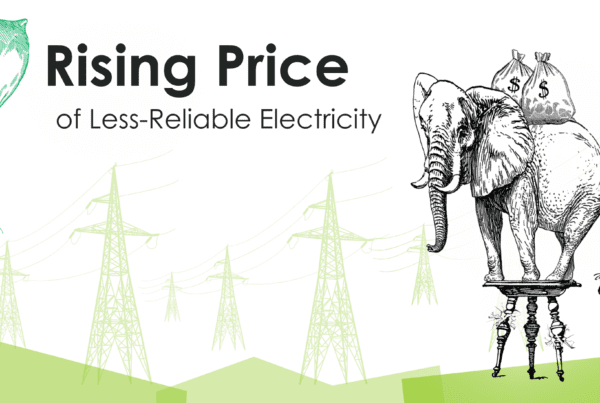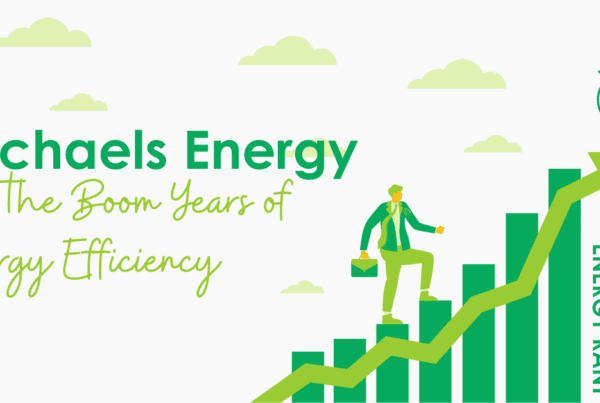In October 2011, the American Council for an Energy Efficient Economy delivered a report, “Follow the Leaders: Improving Large Customer Self-Direct Programs”. But before I discuss/interpret that, what is a self-direct program? Some large energy users wish to opt out of utility sponsored energy efficiency programs, and specifically they want to avoid paying the energy efficiency cost recovery rider. This particular rider is a surcharge, similar to tax on gasoline that is supposed to be used for roads. These large energy users state they can better invest this money in their own energy efficiency program – a self direct program.
On average, this rider may be 1% for an electric utility. So a large energy user with an annual electric bill of $5 million would “self-direct” the use of the $50,000 they would otherwise pay to the utility to deploy to their own energy management program. These customers think they can better invest their own money. I would consider this an ignorant and unwise assertion and I’ll get to this later.
The executive summary of the report, summarized and paraphrased by me, provides no surprises:
- Only a small fraction of self direct programs capture savings that benefit all users as utility-run programs do. Programs should benefit all customers, even non-participants.
- Provisions vary widely and some do not require any sort of measurement and verification.
- The majority of self-directed programs are poorly structured.
- Programs cannot claim to achieve the same bang for the buck as would be realized with the larger utility-delivered program.
- Self direct provisions are popular among policy makers.
- Long term impacts of these programs are unknown.
- Without oversight these programs are “unfair” to other rate payers.
My executive summary of the ACEEE executive summary: Self direct programs are weak, sparing more vivid prose.
Let’s first address the reason these programs exist, which is summarized in number 5 above. Opt out / self direct programs exist because lawmakers are beholden to large corporations (in this case, or unions in other cases) that don’t want to pay for these programs. When necessary, upholding the political class trumps the best interest of society. One doesn’t hold a seat in the House of Representatives for 50 years without playing by these ideals. Term limits anyone? How about logical, geographically random congressional-district boundaries rather than having those in power draw the lines (gerrymandering) to keep them and their party in power 10 years at a time? Ok. So I meander, but this is the root cause.
The “we can better invest our $50,000 than someone else can” argument is bunk. Fifty thousand dollars may sound like a lot to you or me, but not for a political fundraiser or a huge facility. For $50,000 one has to, presumably, write a plan, implement stuff, and evaluate with M&V. This requires substantial effort and skills not possessed by large users. As the report found, not going to happen. These customers would do well to spend $50,000 on new equipment that they think might save energy. Whether it would or not is another question.
Here is the bottom line – if these customers sincerely want to reduce their energy consumption and cost, they are foolish for opting out. The truth is they are “not foolish” (get to this below) because they have no serious intention of spending that money on EE. They just want to keep the $50k. Opting out for customers that think they can better invest their own tiny bit of money is foolish for the following reasons:
- Overhead associated with the program is borne by all rate payers. There are enormous economies of scale.
- Customers can get their money back many times over. Smart companies, and we know many of them, regularly pull hundreds of thousands of dollars from these programs for implementing energy efficiency. Some of these companies are publically traded and have great earnings. Do you suppose there is a connection with being energy efficient, leveraging programs, and taking money from competitors that would rather opt out if they could?
- They lack expertise, possibly with the exception of lighting, to know what their ROI numbers look like.
- Huge customers WILL get the attention of their utilities and/or program implementers.
Huge energy users participating in EE programs should however, be allowed to get all their money back and then some. In the example above, I use a $5 million customer. Depending on the level of rider, a substantially larger customer with $20 million in annual consumption may be capped out by program limits. Such a company that cannot recover their annual contribution to the program has a valid point.
A few other random comments from the report: Three primary reasons large users feel obliged to opt out: (1) Programs are not responsive to their needs. I doubt it. See the last bullet above. However, having evaluated many industrial programs, I understand this point in some cases. To the hammer (program) everything is a nail (lighting), and that’s how they work – pretty weak. (2) These customers have already implemented all cost effective measures. (LOL) and (3) they are subsidizing other rate classes. Uh huh, like I as a residential customer and tens of thousands of other customers don’t subsidize all rate classes too.
The report indicates that some states have “structured” self direct programs and shows which states those include. I imagine ACEEE is reporting what they are told but we work in some of these states and the term “structured” must not entail hardly anything. It’s one-way only feedback and don’t look behind the curtain. In other words, we only get to review end-user plans that are opaque, vague, and vacuous and those go in a file somewhere – probably in the offices of the lawmakers who let them get away with this. And, field investigations are not allowed. If this is structured, what does the relaxed plan look like?
Great report. Hats off to ACEEE.
Goats in Sheep Clothing
I could do an entire rant on this but it would require too much random research, so maybe I’ll pass these along as I see them. I was reading a press release from an energy efficiency company I had known for a long time. The “About ___” section of the press release says “___has been revolutionizing commercial and industrial facilities with proprietary energy management systems…” I was thinking, wow, they must have moved beyond lighting because I thought they were “just” a lighting company. Turns out, hell no. Every single case study in their portfolio is a lighting project. Energy management systems? C’mon. Energy management systems are synonymous with building automation systems, direct digital control systems – facility wide digital controls for HVAC converging to a computer and almost always accessible by internet.
Ceres V ACEEE
On the informative front, Ceres, which I know very little about, released a report on utility EE portfolios nationwide. Again, I’ve taken the data and merged it into a more telling story, at least more telling in what I’m interested in. That is, cost effectiveness at delivering savings and ratio of savings to sales (relative savings). The table below is sorted by relative savings.
I included the recent ACEEE rank for the states in which the utilities serve. This provides some interesting insight as some large utilities that rank very high in relative savings were not viewed very favorably in the ACEEE analysis. Bear in mind that ACEEE rankings are for entire states and include other metrics. Interesting divergences include Nevada Power which serves nearly everyone in the state (3rd Ceres, 17th ACEEE), and Salt River – Phoenix (7th Ceres, 17th ACEEE). The Ceres analysis indicates California (#2, ACEEE) towers over Massachusetts (#1, ACEEE).
Note however the states and utilities do not always align well, or there may be asterisks for some. For example, Wisconsin Power and Light has a small fraction of the EE business in WI while state run Focus on Energy would dominate the ACEEE ranking. Additionally, WP&L has only a commercial/industrial program. Duke Energy is smeared across multiple states. Note also that relatively tiny utilities in Texas are in the Ceres report while the giants are not, for whatever reason.
Regarding program spending per kWh saved, generally speaking where electricity costs are high (New England / New York), the cost to save energy is also high. However, by this metric again, it seems California got a lump of coal from ACEEE compared to Massachusetts, which has much higher cost per kWh saved, and I don’t think the energy costs are that disparate among the two. Also, generally speaking, states and utilities that have had programs a long time (the easy stuff is gone), have somewhat higher cost per kWh saved.




